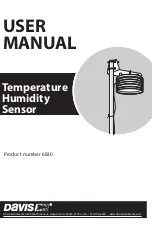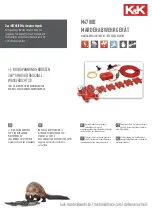
Functional principle of the vacuum regulator | Operation Manual C 2213 |
9
In most cases, a chlorine delivery from a chlorine cylinder is not sufficient, because more than 650 g/h shall be
metered. In such cases, chlorine gas is delivered by several cylinders at the same time in a so-called battery
operation. In order to make sure that the cylinders are emptied uniformly, all full-vacuum chlorinators must
start working at the same vacuum. For this purpose the C 2213 chlorinators are fitted with an opening pres-
sure adjusting device. The adjusting screw
⑩
is used to set the effect of forces between springs
⑨
and
③
.
As a result, it is ensured that the opening pressure is the same for all chlorinators and that the chlorine gas is
delivered almost simultaneously from all connected cylinders.
Simultaneously delivery works with rate of approximately 200 g/h and more. In order not to remain under this
rate, make sure that the number of connected cylinders is not larger than necessary.
Flow limiter
If some cylinders of a battery are already emptied and the full metering capacity is required, the delivery rate of
the partly filled cylinders becomes inadmissibly high, thus causing icing of the cylinders. This will be prevent of
the in the vacuum connector integrated flow limiter
⑪
. It allows for a maximum delivery rate of 1000g/h.
If the full-vacuum chlorinator is mounted on chlorine barrels or in the case of sufficient chlorine supply from
other sources, the device enables rates of up to 10 kg/h. For this purpose, the flow limiter can easily be
removed.
(As a standard the flow limiter is an integrated part of the delivery).
Residual pressure preservation
While emptying the chlorine cylinder, the cylinder pressure decreases until it is too low to remove the ball
④
against the spring
⑥
from the valve seat
⑤
. A residual pressure of approx. 0.1 bar remains in the cylinder.
Thus humidity cannot enter the cylinder during replacement. The humidity of the entering air would cause
the chlorine cylinder to corrode internally so that the chlorine gas could be contaminated. Consequently, the
residual pressure preservation helps to extend the operational life of the chlorine cylinder.
Pressure gauge
The C 2213 chlorinator is equipped with a pressure gauge for the indication of the cylinder pressure. It is a
diaphragm pressure gauge with a splash-proof measuring mechanism in a plastic housing. The diaphragm of
the manometer is coated with a silver film as a protection against the chlorine gas. In order not to damage it by
dirt particles the chlorine gas is directed through an integrated filter
⑫
before reaching the pressure gauge.
The measuring range of the manometer of -1...0...15 bar was chosen in order to allow a supervision of the
residual pressure maintenance.
3.3 Technical data
materials
chlorine-resistant materials such as nickel-plated brass, Hastelloy, PVC, FPM
max. capacity with flow
limiter
ca. 1 kg Cl
2
/h
without flow limiter
10 kg Cl
2
/h
operating vacuum
110 mbar (for 200 g/h)
display accuracy
+/- 6% of final scale reading
weight
2300 g
pressure stage
PN16
pressure connection
union nut W1“, G5/8, G3/4, 1.030“-14NGO, Yoke
dosing connector
PE tubing d 8/12, 12/16
Tab.: 1: Technical data C 2213










































